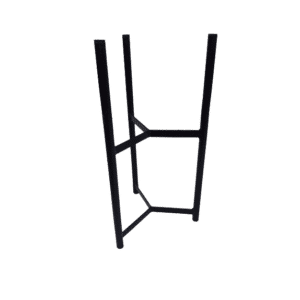How to Eliminate Algae
DIY and how-to

How to eliminate algae from your pond
The most frequent complaint about algae is aesthetics. A green pond covered with algae is unsightly and an eyesore. However, algae can pose a real problem to your pond health when it takes over, especially during algae blooms.
Oxygen levels in your pond
Photosynthesis is a good process for your pond. The plants use carbon dioxide and release oxygen which is needed for your fish, the decomposition of organic matter, and other processes. However, photosynthesis only occurs when there is sunlight.
As the sun goes down, plants turn from oxygen-producing to oxygen-consuming organisms. Therefore, the more aquatic plants and algae you have in the pond or body of water, the more oxygen they will release during the day and the more they will consume at night.
As the night goes on, the oxygen levels continue to decrease. The lowest oxygen levels will be just before sunlight in the morning before the algae and plants start producing oxygen again. If your pond has too much plant life, the oxygen levels can decrease to the point that large fish struggle to survive.
An algae bloom is a rapid reproduction and spreading of algae when conditions are right. Algae blooms typically occur during the hot, sunny, calm part of the summer. When an algae bloom occurs, your pond can be covered with algae in a very short period of time.
When the algae bloom dies off, it adds a large amount of dead organic matter to your pond. This organic matter is decomposed by microorganisms at the pond bottom. With the added organic matter load on the pond, the total amount of decomposition occurring in the pond increases and the decomposition process uses up oxygen and sets free carbon dioxide.
This causes two problems. The first is a lack of oxygen. When the oxygen in the pond is used to decompose the dead algae, it is not available for fish and other aquatic life. The larger the organism, the more oxygen it uses. Therefore, the larger fish that have been in your pond for several years will be the first to die when oxygen is taken up.
The second problem with a large die-off and increased organic matter is nutrients. When the algae die off and are decomposed, the carbon dioxide and nutrients are released back into the pond and a new cycle of algae growth begins.
Excessive algae growth will also limit sunlight from penetrating your pond and can cause significant thermal stratification (temperature layers throughout the pond). The water that does not receive the sunlight and warmth cools and becomes denser. This dense water sinks and oxygen levels decrease because it is not in contact with the air.
How aeration can help
Adding an aeration device, such as a pond aerator or aerating fountain will provide added oxygen to the water and help buffer the effect of an algae die-off. When the algae die and decompose, the added oxygen allows the decomposition process to occur properly and provides oxygen for the fish and other aquatic organisms. By splashing the water in the air, the aeration device is not only adding valuable oxygen, it is also helping to vent gases such as carbon dioxide which are being produced in large amounts from the decomposition process.
Using a pond aerator or aerating fountain will also help prevent an algae bloom in the first place if it is installed before there is a major problem. As discussed above, the added oxygen will help the decomposition process and actually make that process occur quicker. It will also vent the extra carbon dioxide.
Adding a pond aerator, aerating fountain, or water circulator will also create surface agitation in the pond or body of water. This is beneficial in a few ways. First, it helps eliminate the stagnant water areas and mimics natural wind. As stated above, algae and algae blooms typically occur in the hot, calm, sunny times of the year. Just simple water movement will help limit the amount of algae in the pond.
Surface agitation is also beneficial because it helps mix up the algae already present within the water column. Algae cannot sit at the water’s surface and soak up all the sunlight it needs for photosynthesis, and it cannot survive without large amounts of sunlight. The agitation also helps to destratify the pond by mixing up the water and limiting the negative effects of turnover.
Finally, the agitation helps refract some of the sunlight that hits the water’s surface. This limits the amount of sunlight that can penetrate the water column. Algae and other aquatic plants struggle to survive with less sunlight throughout the water column. Some will still linger, but it will help limit the overpopulation of algae and other aquatic plants.
Other methods of treatment
Several other algae control and prevention methods include herbicides, bacteria and microbes, chemicals, UV sterilisers and other additives. Each has a slightly different way of attacking algae; some may work better in different situations and applications. However, each is designed to help eliminate and prevent algae from growing. Some only treat one generation of algae blooms, others may work longer.
Visit our Stodels Fish and Pet Centres for expert advice on how to treat and /or eliminate your algae problem.




